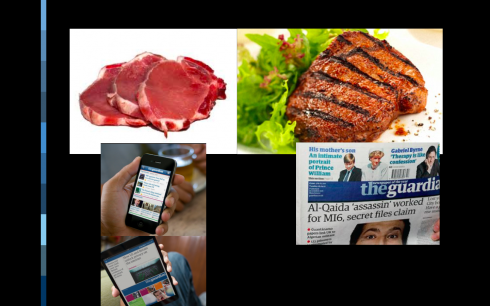This is the weekend edition of TheMarioBlog and will be updates as needed. The next blog post is Monday, March 3.
TAKEAWAY: So New York Magazine will now switch from weekly to biweekly. This is the shape of things to come as publishers review frequency patterns and adapt to the now and later mode of publishing


Recently, in a Letter from the Editors column, those in charge of New York Magazine announced to the world their intention to cut back on the frequency of publication from weekly to bi-weekly. The editors explained something that makes perfect sense: traditional frequency publication cycles are not realistic, nor economically sustainable, in today’s 24/7 information dispensing environment.
“We like our speeds varied,” the editors wrote. “We speed up online and digital. We slow down in print.”
They should have added that we also switch platforms in the process as we access information at various—and distinct—moments of our busy days.
Why a change of frequency for New York Magazine
“Some of the reasons for the change are, yes, economic—a weekly is killer-expensive to make. But we also think of it as a natural response to the bifurcated way people like to read—in rawer form immediately and in more cooked iterations over time. Our sincere belief is that we can make a better magazine this way, one that feels just as urgent as ever but is more alive to all the magical properties, and possibilities, of print—all those design flourishes and writerly ambitions and sensory experiences that devoted readers of magazines cherish.”
I do like the references to “raw’ and “more cooked” here, but it is exactly what we have been writing about in this blog and proposing in our workshops globally: we have the most informed and savviest of audiences to please, but they do move fast and slow, craving the quick bite, the “quality now” as the editor of Norway’s Aftenposten, Espen Egil Hansen, refers to it, but also the “even better quality” later.
Journalists and designers who tend to be perfectionists may have a bit of trouble dealing with presenting information that is “too raw”. “Wait till the soup is fully cooked,” they argue, while the reader/user is saying “as long as you can taste the chicken in it, serve it to me right now.”
More tactile
And who says that keeping the finger happy is only something we reserve for digital platforms?
“The magazine will endeavor to be more tactile than it’s ever been, with textured pages and foldouts from time to time, like the one art critic Jerry Saltz put together for this issue offering walking tours of his favorite artworks to see in the city. And more durable, too, with each page and piece designed to try to earn return trips from your bed stand or a place on your refrigerator (there’s a reason we called Rob Patronite and Robin Raisfeld’s encyclopedic guide to cheese right now a “Keeper”).” the editors tell us.
There is much to underline in this New York Magazine statement about their change of frequency.
They have obviously analyzed how information is consumed and taken action to abandon the legacy of a frequency cycle that is no longer appropriate. They are also looking at the wonderful content of New York Magazine and how to best present it across platforms. This, too, is what I call doing print happily, which does not necessarily mean keeping the frequency in which a publication thrived before.
We will keep an eye on how New York Magazine advances as it embraces this new strategy.